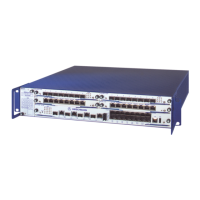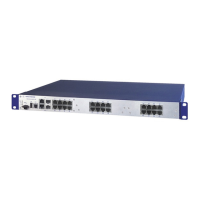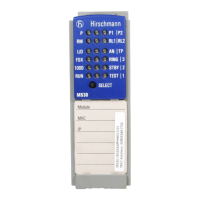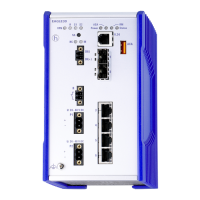Redundancy
RM Web L3E
Release
6.0
07/2010
7.5
Spanning Tree
195
–
a
This bridge is also known as the CIST root bridge (CIST: Common
and Internal Spanning Tree). It has the best bridge ID of all bridges -
both those that do not belong to any MSTP region (CST, Common
Spanning Tree) and those that belong to the global instance of an
MSTP region (Internal Spanning Tree, IST). All the bridges in the
entire layer 2 network use the time parameters of the CIST root bridge,
e.g. the Hello Time.
–
b
The IST regional root ID can be identical to the above CIST root ID
for the MST region of the device if the IST regional root bridge has the
best bridge ID in the entire layer 2 network.
–
c
These are identical to the root path costs from Spanning Tree or
Rapid Spanning Tree if you are not using MSTP (in these cases every
device sees itself as a separate region).
Root path costs External path costs from the regional
root bridge of the MST region of the
device to the current root bridge of the
entire layer 2 network (CIST root).
c
These are the same for all devices
within an MST region. 0: Regional root
bridge is simultaneously CIST root
bridge
0-200,000,000
Internal root path costs Internal path costs from the root port of
the device to the current regional root
bridge of the MST region of the device.
0: local bridge is root.
0-200,000,000 -
Parameter Meaning Value range
Buttons
New Opens a dialog for entering a new MST
Instance ID. Enter the desired MSTI ID and
click on the OK button. The device creates a
new tab in the dialog with the name
“MSTI <ID>”.
1-4094
delete it Opens a dialog for selecting an existing MSTI
ID. Select the desired MSTI ID and click on
the OK button. The device deletes the tab
with the name “MSTI <ID>”.
-
Table 87: Dialog Multiple Spanning Tree settings, MST Global (CIST), buttons
Parameter Meaning Possible
Values
Default Setting
Table 86: Dialog Multiple Spanning Tree settings, MST Global (CIST), Global MST
parameters
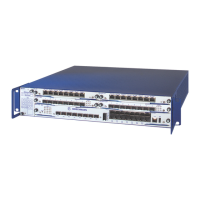
